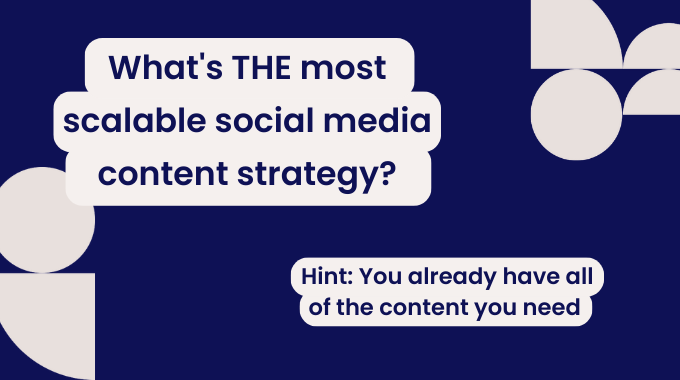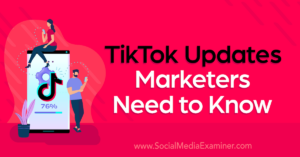We’re all on familiar terms with Copy and Paste. Whether you’re saving 6 seconds or 6 hours of extra work, ctrl+c, and ctrl+p are still two of the best inventions of the 21st century – no contest.
But anyone who has been involved in content creation for more than 5 minutes will no doubt be a little cautious around the copy-paste routine. Content is king, but only if it’s original – only if it finds a way to offer some unique, never-seen-before vantage point on a subject that interests the widest audience possible, right?
Not quite. While content duplication remains something of an SEO-no-no, there’s a lot to be gained from a solid content repurposing strategy. It’s copy-paste but with a handful of extra steps in the middle…
What is repurposing content?
This is the practice of putting old, previously published content to use elsewhere. Say, a blog post that performed well on your website reinvented for LinkedIn or condensed into a few key points for a tweet.
It’s a different ballgame from content creation. Rather than working from scratch, you’re working from content that has already proven itself to be useful and insightful to audiences. It’s efficient in many different ways, and a practice that any business should take up. If not, they’re underutilizing every piece of fresh content they generate.
The right social media marketing platform will offer 360° insights into how your posts perform, making it easy to identify content that’s ripe for repurposing.
What is the difference between repurposing and duplicating content?
Repurposing content means giving it a new life – using it to create something new. Duplicating content simply means reposting it ‘as is’. Like a rerun of a TV show, duplicated content offers nothing new to audiences. Sure, it was great the first time around – and it’s still great – but it won’t engage audiences the same way it did before.
Repurposed content holds a lot more value for SEO. While, yes, it’s based on existing content, it’s also a unique piece of content in its own right, with something unique to offer to the audience it’ll be brought to.
This difference is key. How many times do you want to see the exact same article, or the exact same post on Instagram? Once, maybe twice (but only if you really enjoyed it the first-time round)? Google itself confirmed that the duplicate content penalty is a myth, but that doesn’t mean it will serve your SEO effort.
Repurposing doesn’t increase the lifespan of a piece of content, but gives it a brand-new life altogether.
We’ve put together a guide on how to repurpose content – particularly when it comes to addressing the unique formats different social media channels present – if you’re interested to know more.
It’s the most scalable social media content strategy
Any good social posting strategy is built around two things: quality and quantity. Utilizing your social channels means investing plenty of time and resources into ensuring that you’re posting consistently, and that what you’re posting is going to engage readers.
That’s all easily said, but not so easily done. How can you stay on top of content creation, maintaining quality and value to audiences, without steadily increasing the size of your content creation team, too?
You guessed it – by repurposing existing content that has already proven its quality and value to audiences.
It’s the difference between investing in paper plates and disposable cutlery, and investing in a full set of porcelain dinnerware. If your social posting strategy includes plenty of repurposed content, you’re enabling the business to extract far more long-term value out of each new piece of content created.
It doesn’t mean content creation should grind to a halt – you still want to publish plenty of original posts to social media – but it does mean you can scale your social media content strategy beyond its original parameters without doubling the size of your content team.
It’s more rewarding for creators
This is particularly true if you’re really embracing employee-generated content, as you should be. Empowering individuals to create strong content – whether it’s your entire workforce, or just your marketing team – is a great way to boost engagement with core issues within the company, and boost collaboration.
But content that is made to be published and forgotten is limited – it won’t continue to empower creators after that initial wave of interest.
But social conversations and trends occur in cycles. A month or a year down the line, that content will be just as relevant as it was before, but so many businesses will simply create and publish new content, despite the fact that they already have the perfect content stored away somewhere.
A social media strategy that includes content repurposing is simply more rewarding, as well as offering a higher ROI on content creation.
It means you will always be prepared to jump on trending conversations
There’s a lot wrong with an ad hoc approach to content creation. It’s a big hurdle to overcome if you want to streamline your social media publishing workflow, since being able to action your social listening insights and claim a good share of voice in topical conversations depends on your being ready, with the right content to publish.
Creating content in bulk then preparing it for future publication is key, and content repurposing is another aspect of that. It diversifies your content stores, meaning you’re always prepared to publish content relevant to trending subjects in your industry.
You’ll reach new audiences
Different channels reach different audiences. Twitter, LinkedIn, TikTok, Facebook – they’re all unique, and different types of content will find better success on some channels more than others. Leveraging social media statistics to inform how you repurpose your content is very important.
After all, reaching those audiences depends on your ability to hone your content strategy, and devise new and creative ways to reuse content on social media. A 160-character sentence isn’t making the most of LinkedIn’s format, for instance, while a long-form video is better trimmed down to a few bitesize clips for Instagram reels. Different platforms cater to differing attention spans. If you can do that with your content, then you can enjoy a much bigger audience across your channels.
Repurposing content isn’t just about giving it a new life, but new scope.
You’ll be able to keep up with your social publishing strategy…
Consistency is key. One of the reasons some businesses are still struggling to see a compelling ROI from social media marketing is that, unless they make a real commitment to scheduling content and publishing regularly, the results will feel spotty, and give no incentive to invest more time and resources into social posting.
This is a real waste, but we get it – consistently producing quality content that will really engage your audiences and drive up that ROI isn’t always easy.
This is why so many brands split their social publishing between original content, curated content (from other resources), and repurposed content. That way, keeping up with your social posting schedule isn’t a case of constantly chasing your own tail. You won’t need to settle with filler content but, instead, can always post something genuinely worth interacting with.
Repurposing content means having more to post, for a smaller investment of time and resources.
…which means creators have more time to put together quality content for the future
If you’re struggling to keep up with your own publishing schedule, then the chances are that quality is suffering. It’s an unavoidable trade-off: unless you thrive under the pressure of a looming deadline or bossy editor, you’re going to have to sacrifice a little quality in order to meet the time crunch. If you’re unwilling to sacrifice that quality, then great, but you’ll miss the time crunch.
Creatives underpin your social media campaign strategy, and creatives work best in spaces that allow them to be creative. If you’ve got a month’s worth of content scheduled ahead of time on your social media management platform, then they have that space.
Repurposed content can feed into your social advocacy program
Turning your workforce into employee advocates offers some incredible benefits, from embracing the power of social proof to humanizing your brand, and empowering your employees to share their unique perspectives and excel in thought leadership.
But, again, it relies on your team having the time and space they need to steadily chip away at content creation.
Recycling content for your employee advocacy program, and categorizing it according to topic and niche within your platform for social media marketing, will ensure there’s always a wide variety of content they can post to their own channels.
Repurposing and recycling aren’t dirty words, even when it comes to social media marketing for businesses. It’s a whole different kettle of fish to duplicating content, which is really just ripping off yourself when it comes to SEO. Knowing how (and when) to repurpose content is a real skill for anyone involved in content creation, publication, and marketing. It’s about extracting value from quality content, maximizing reach and engagement, and consistently positioning your brand as a key, authoritative source in your industry.
And what could be wrong with that?











